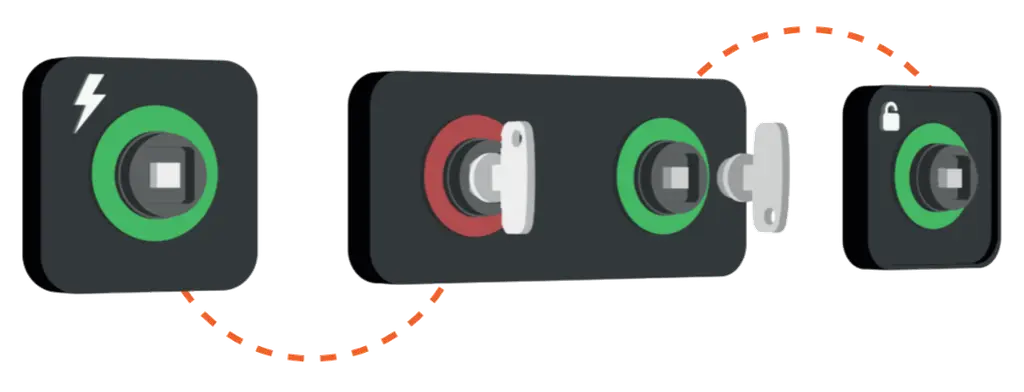What is a Trapped Key Interlock?
A trapped key interlock is a safety device applied to two or more moveable parts, preventing (or allowing) a movement or operation of one part only when another part is locked. Sentric’s trapped key interlocks operate on the principle that the key can be removed only when the locking bolt is in a predetermined position.

Trapped Key Interlocking
The Sentric interlock is used to protect personnel and equipment, with the goal of eliminating errors that can occur when it is necessary to obey a sequence of predefined operations. The Sentric system prevents anyone from trying to circumvent the system, which is crucial to the safety of the procedure sequence, and the people in operation. The Sentric interlocks can be mounted directly on the equipment, which means the system is fully integrated, and simple to operate.
Why use a Trapped Key Interlock system?
- TO PROTECT personnel from hazards by ensuring predetermined sequences of operations are followed.
- TO PREVENT loss of operations and setbacks due to equipment damaged by mis-followed operations.
- TO PROVIDE risk control; understanding that everyone has the right to be safe at work!
Installing a trapped key interlock system ensures a predetermined sequence of events is followed. While Lock Out – Tag Out (LOTO) provides a visual warning and some protection, a trapped key interlock system physically prevents a specific set of actions until the previous action has been completed. Checkout the video to learn more:
How do Trapped Key solutions work?
A trapped key interlocking solution consists of 3 defined actions: isolating hazardous energy, transferring or exchanging sequenced keys, and accessing the protected area or equipment. Interlocks are designed specifically with these actions in mind to ensure the comprehensive solutions operate effectively.
An isolation interlock is typically the initiating interlock and ensures the isolation of power. Once the equipment is de-energised, the interlock key is turned, engaging the bolt, blocking the power switch, and releasing the key. The interlock is now a physical barrier to preventing the equipment from being re-energised.
Now that power has been isolated, the released key can be taken to a transfer or exchange interlock where there the access keys are trapped, awaiting the introduction of the initiating key from the isolation interlock. Once the initiating key has been inserted and turned in the transfer block, the access key(s) are now released, and the initiating key is trapped.
The access key(s) can now be taken to the access points and inserted into the access interlock(s). Personnel can safely enter the area with peace of mind that the power has been fully isolated and cannot be re-energised until the trapped key solution is followed in reverse.
For further reading please see our article The benefits of TKI and where it wins.